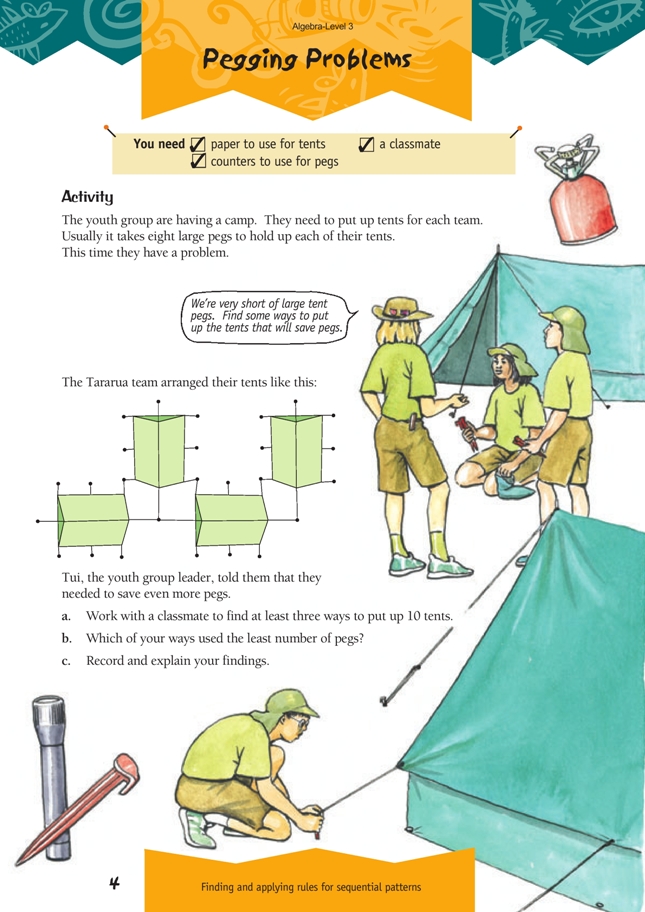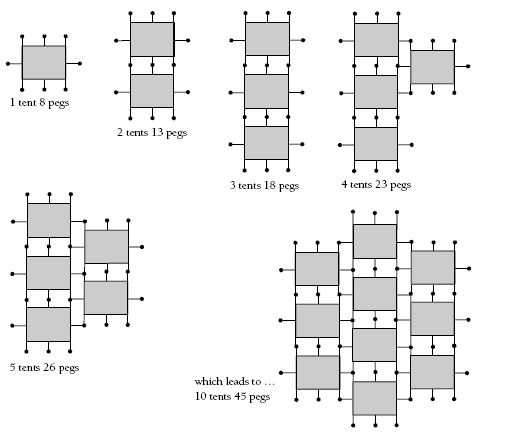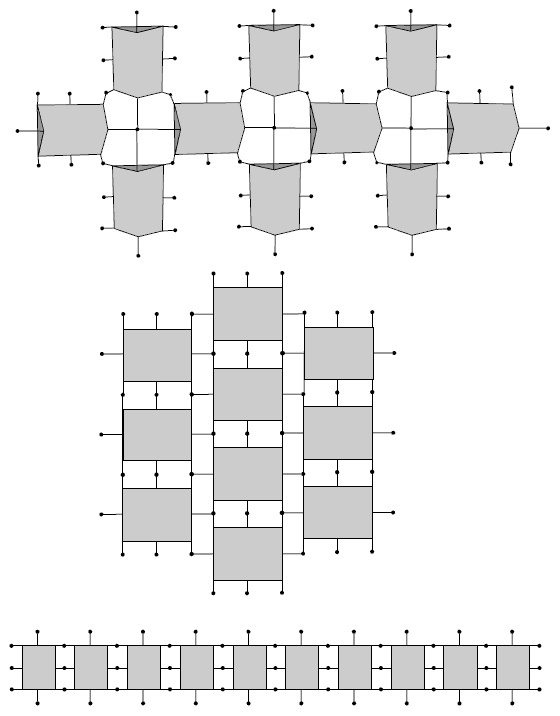This is a level 3 algebra strand activity from the Figure It Out series.
A PDF of the student activity is included.
Click on the image to enlarge it. Click again to close. Download PDF (249 KB)
find and apply rules for a sequential pattern
counters to use for pegs
FIO, Level 3, Algebra, Pegging Problems, page 4
classmate
Remind students before they begin that they need a way of recording their tent arrangements and the number of pegs used.
Students could use paper and counters to model the tents and pegs and use trial and improvement to work out the most efficient way to peg out the tents. Encourage them to begin with a small number of tents and for each arrangement, record in a table how many pegs they need for each arrangement of tents. When they have filled in each table up to six tents, see whether they can predict how many pegs they will need for 10 tents. Encourage them to see if there is a general rule.
Be aware that some students will make a ratio error, believing that the number of pegs needed to make 10 tents will be twice that needed for five tents. The error ignores the effect of joining, but you can correct it by modelling with equipment.
Students will use the least number of pegs if they attach each new tent to pegs that have already been used for other tents. For example:
The number of pegs used for some ways of putting up the tents can be expressed as general rules. These types of general rules are quite difficult and it is unwise to teach them. Be aware that some more advanced students may discover them. An example is:
The table shows that five more pegs are needed for each extra tent. The first tent took eight pegs, so the number of pegs needed for 10 tents could be found by:
Another expression of the rule is 3 + (5 x 10) = 53.
These rules for the number of pegs could be written as algebraic expressions:
8 + 5(n – 1) or 3 + 5n, where n is the number of tents.
Patterns where there is not a constant difference between the peg numbers are not so easy to find general rules for. Consider this pattern:
The pattern of differences is not constant. One way to resolve this is to find a rule for odd numbers of tents and a rule for even numbers of tents.
The average increase per tent is 6 1/2, so we could try 61/2 as a multiplier:

Answers to Activity
a. Answers will vary. Three possible suggestions are:
b. Answers will vary.
c. Answers will vary.








